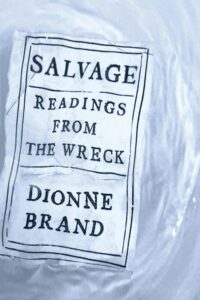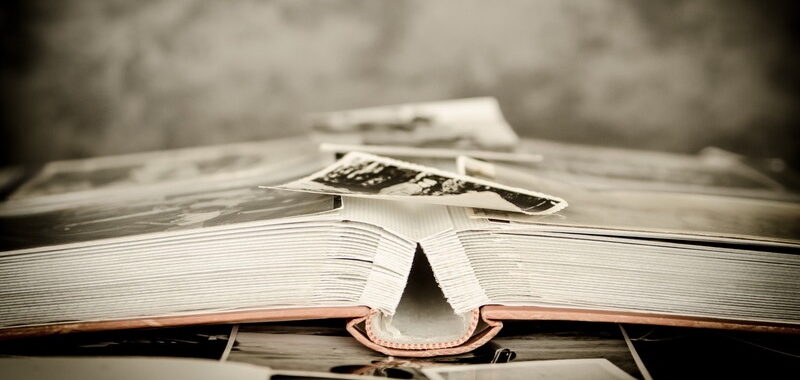There is a photograph of me taken when I was a child. I do not recognize myself, though I seem to remember the day and the event. The little girl, reputed to be me, in the photograph is about three or four years old. It is the only photograph of this period. They say that I am one of the four children in this photograph; the three others are my sisters and my closest cousin. I recognize them. We are four girls. I am alleged to be second from the left, third from the right. We all have white ribbons in our hair. We are taking a photograph to send to England to my mother and her younger sister, who are there becoming nurses.
Article continues after advertisement
Several years before, they had left by boat, by ship, perhaps a Cunard ship, whose name my aunt does not now recall, though she does recall passing Tenerife, standing on deck—thinking that one day she would like to go back there. She says this even today with the same longing as she did then. Over the phone in the present, Tenerife is vivid in her recollection as a site of beauty, another world. They arrived at the port of Southampton, my aunt and my mother, sometime in 1956. From Southampton they took a boat-train to London, where they were gathered by the hospital they’d been assigned to. This boat-train I meet later in the wonderful first sentence of Samuel Selvon’s novel The Lonely Londoners: “One grim winter evening, when it had a kind of unrealness about London, with a fog sleeping restlessly over the city and the lights showing in the blur as if is not London at all but some strange place on another planet, Moses Aloetta hop on a number 46 bus at the corner of Chepstow Road and Westbourne Grove to go to Waterloo to meet a fellar who was coming from Trinidad on the boat-train.”
I remember all these actions, but I do not recognize the girl who is me in the photograph. Whomever I appear to be is simply that: an appearance.
I imagine that my mother and my aunt encountered this same London as described by Selvon. When we take the photograph, we are taking it to send to my mother and my aunt, but also to send to England. England is in the air at home. It is referred to with reverence as “away” or “abroad.” England is as much the recipient as my mother and my aunt; and for England, standing behind my mother and my aunt, we must make a good appearance. They arrived in London under the impression that they, too, had to make a good appearance, so that they and we would be accepted and acceptable. The girl, said to be me, is to my mind, the most active person in the photograph, helping the photographer to make the photograph right.
I remember my younger sister and cousin crying and the photographer, Mr. Wong, assigning me to distract them with a toy rattle. I take my job seriously. Although now, it seems to me, mechanically. We must look out into the camera, Mr. Wong says. “Little girls, smile! Don’t cry.” I recall trying to follow his instruction; my little sister is crying, and my cousin is trembling in sympathy. My older sister is aloof with her own self-arrangement. I remember all these actions, but I do not recognize the girl who is me in the photograph. Whomever I appear to be is simply that: an appearance—as when you come upon a figure across the street reflected in a glass-walled building. Or even more remote than that; I cannot make out any gestural similarity between us. Except for my older sister, we children do not remember my mother and my aunt. We three youngest only know of them from stories, from the frequent invocation of their names in the house where we live. My mother and my aunt are in the imagination and so, too, is England, where they now live and where they are said to be getting along. We are all tied to England, and England to the imagination.
All letters after this—all communication of information, endearment and entreaty—will go to and arrive from Wandle Valley Hospital, Mitcham Junction, Surrey, England. Sixty years later my older sister will still remember this address by heart. And all the letters, back and forth, will begin with this courtesy: Dear ______, Hope you are well and enjoying the best of health. England will be the recipient, the audience. England is the better place. Our lives will revolve around and be decided in the letters sent and received.
Everyone says the little girl looks like me. I doubt it. I do not recognize myself. Already I am changed in the photograph, since I leave off being myself to follow the directive of the photographer; already I have changed, thinking of composing myself for the audience. I now recognize myself as authored, altered. As selected, sorted, from a series of selves, for appearance and presentation. All photographs are like this, of course. One is conscious or anxious or confident or deliberate in striking an appearance that must keep, must transmit one’s meaning—or the photographer’s meaning.
That is the studium, as Barthes describes in Camera Lucida—and that photograph is supposed to reach its viewers and reassure them. And it probably does. Though we four children are without conscious meaning, which is why we are crying or aloof or attentive to the photographer—and that is the punctum. The photograph, or the job the photographer must do, is disrupted by the indecorousness of some of the subjects, the disparate attitudes of the little girls who, despite being told of the importance and expense of the occasion of the photograph, respond in wholly individual ways. They do not even mean to disrupt; they have been warned not to be ill behaved, as I recall. But they’ve panicked in the face of these disciplines.
They are panicked by the stranger who is the photographer, the new-linoleum smell of the room where the photograph is being taken, the tripod, the camera, the warning to behave and the shy desire to have themselves be seen by the mother and the aunt in England. Ultimately, the photograph can’t do all the work it is required to do: the photograph does produce the likenesses of the children, but they themselves are in the middle of being something—they are still pliable, permeable; you can see all that in the photograph—and that disrupts the work the photo is being sent out to do. They are/we are not properly composed. The photo also perhaps confirms the disciplining work still to be done. Despite Mr. Wong’s arrangement of us by height, despite his angles and the curtain behind and the linoleum floor composition, the photo cannot hold the girls in. And perhaps we will remain in this liminal space between photograph and meaning—permeable. But perhaps not.
The permeability evident in the photograph will yield to instruction from here on—instruction that also arrives from English school books, English academic testing, English literature that a colonial apparatus provides. I will go on to Mrs. Greenidge’s Dame School, I will go on to the San Fernando Girls’ English Catholic School, I will go on to the Naparima Girls’ High School, sending letters and receiving instructions from England; from Surrey, then from Croydon; then from Pip and the Convict, Dick Whittington and His Cat, “Bobby Shafto’s Gone to Sea,” “To a Butterfly,” “Oh Mary, go and call the cattle home/…Across the sands o’Dee”—becoming, becoming the representation of the self, signified by the opportunity of the photographic event.
Perhaps we will remain in this liminal space between photograph and meaning—permeable. But perhaps not.
A photograph. A portrait, desired, settled and puncturing the frame of the photograph. All the relations that come together to make the portrait—the children; the mother and the aunt waiting for the photograph; the adult outside of the frame who brought the children here to take the photograph; the photographer, who has taken many such photographs to send to mothers and aunts and fathers and sisters; England, observing these children over the shoulders of mothers and aunts. This porous portrait is full of multiple autobiographies: Mr. Wong, the photographer, probably traces his family to Chinese indentured labor—from 1846, or perhaps even as far back as 1806 (Indian indentured labour, beginning in 1845, also makes up the historical in the town where the photography studio operates); the children, whose history goes back to the period of Arawak/Carib extermination and the enslavement and transportation of their families from West Africa to the New World. All of these meet in a photography studio to follow a custom marked at every step with colonial imperative. All of these violent trajectories are synthesized in the photograph. The act of taking the photograph is deeply calculated to “arrive,” to align with the imperative. It is an attempt to “appear,” to synchronize with coloniality’s time of modernity, of proper subjectivity.
I call this part of Salvage “An Autobiography of the Autobiography of Reading,” leading with the indefinite “an autobiography” and leaving open the possibility of multiple autobiographies, of which this is but one iteration; it is particular but not individual. The indefinite article makes it one account, yet not one that is stable. The fissile materials of its construction through coloniality leave open molecular changes that may generate numerous autobiographies. Alongside this indefinite “an autobiography” another might be made, produced simultaneously. Which is to say, this should not be mistaken for the account of my life but an analysis of reading.
An autobiography gestures to the world of a reading self. It signals the complicated ways of reading and interpretation that are necessary under conditions of coloniality. It suggests that coloniality constructs outsides and insides—worlds to be chosen, disturbed, interpreted and navigated—so as to live something like a real self. Which is to say, I could have been someone else. I could have drowned in the volume; I could have been buried under the weight. I could have suffocated, gasping in the toxicity of the atmospheres of coloniality. The definite article of the second clause, “the autobiography,” identifies the subject who is supposed to be made through colonial pedagogies in the form of texts—fiction, non-fiction, poetry, photographs, governmental and bureaucratic structures. This subject, situated where violent pasts and futures of coloniality meet, is hailed in these texts so as to be governed with violence and erasure, and to suppress the understanding of that governance as violence and erasure.
__________________________________

Excerpt from Salvage: Readings from the Wreck by Dionne Brand. Published by Farrar, Straus and Giroux, a division of Macmillan, Inc. Copyright © 2024 by Dionne Brand.

